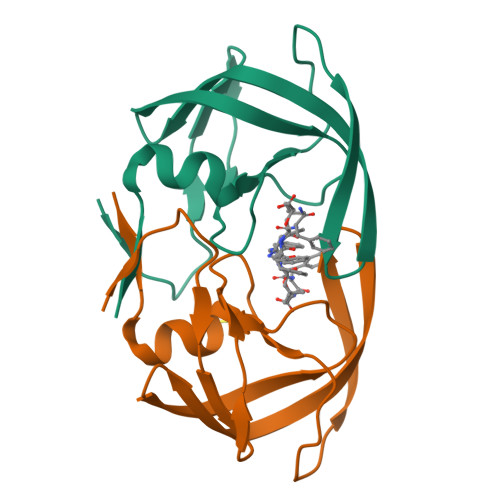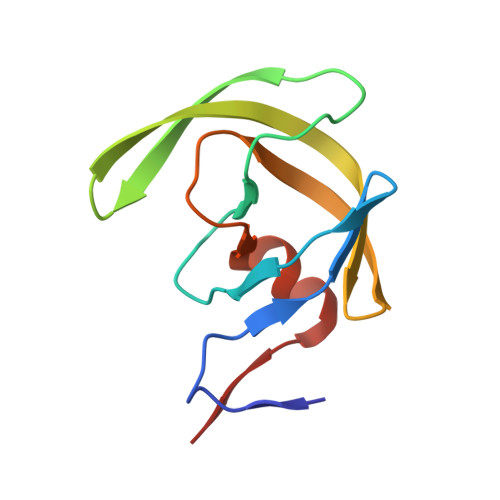An Ethylenamine Inhibitor Binds Tightly to Both Wild Type and Mutant HIV-1 Proteases. Structure and Energy Study
Skalova, T., Hasek, J., Dohnalek, J., Petrokova, H., Buchtelova, E., Duskova, J., Soucek, M., Majer, P., Uhlikova, T., Konvalinka, J.(2003) J Med Chem 46: 1636-1644
- PubMed: 12699382
- DOI: https://doi.org/10.1021/jm021079g
- Primary Citation of Related Structures:
1LZQ - PubMed Abstract:
An X-ray structure (resolution 2.2 A) of mutant HIV-1 protease (A71V, V82T, I84V) complexed with a newly developed peptidomimetic inhibitor with an ethylenamine isostere Boc-Phe-Psi[CH(2)CH(2)NH]-Phe-Glu-Phe-NH(2), denoted as OE, is described and compared with the complex of wild-type HIV-1 protease with the same inhibitor (resolution 2.5 A). OE shows tight binding to the wild type (K(i) = 1.5 nM) as well as mutant (K(i) = 4.1 nM) protease. The hydrogen bonds formed, in the case of hydroxyethylamine inhibitors, by a hydroxyl group are, in the case of OE inhibitors, replaced by a bifurcated hydrogen bond from the isosteric NH group to both catalytic aspartates Asp 25 and Asp 125. The binding modes of OE inhibitor to the wild type and mutant protease are similar. However, in the mutant protease, weaker van der Waals interactions of the mutated residues Val 84 and Val 184 with OE were found. This lack of interaction energy is compensated by a new aromatic hydrogen bond between the phenyl ring of the inhibitor in position P1 and the mutated residue Thr 182. Energy analysis based on molecular mechanics has been performed to distinguish between the static and dynamic backgrounds of disorder observed at the mutation sites Thr 82, Val 84, Thr 182, and Val 184.
Organizational Affiliation:
Institute of Macromolecular Chemistry, Academy of Sciences of the Czech Republic, Heyrovského nám. 2, 162 06 Praha 6, Czech Republic. skalova@imc.cas.cz




















